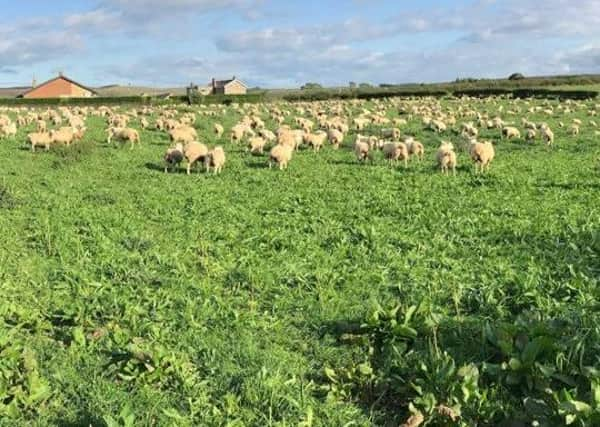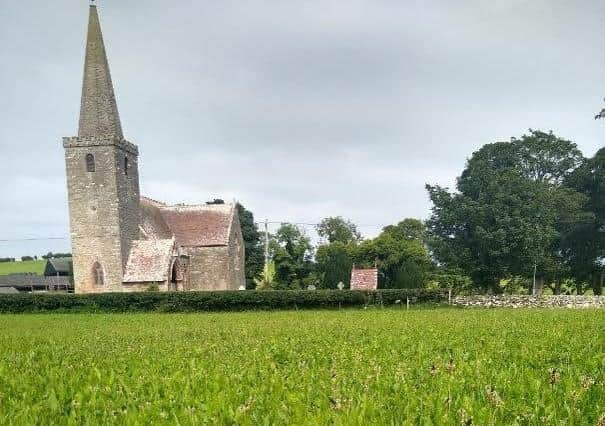The pros and cons of multi-species swards


During the webinar, the partners presented their experiences with growing multi-species swards (MSS) on commercial farms and in research institutes in Northern Ireland, northern England and Normandy.
SUPER-G is a five-year project that brings farmers and policymakers from across Europe together to co-develop sustainable permanent grassland systems and policies. It aims to optimise productivity, whilst delivering a number of ecosystem services including biodiversity.
Advertisement
Advertisement
The first presentation was by Paul Newell Price (ADAS) and James Drummond (Lemmington Hill Head). They presented findings from the Lemmington Hill Head farm trial in Northumberland, England. The aim of this trial is to determine the effect of selected grass-herb mixes on sward and livestock performance, as well as the impact of phosphate fertiliser applications and a range of mineral nitrogen application rates. The preliminary results so far indicate that grass/herb mixes containing either sainfoin or birds-foot trefoil can result in a higher daily liveweight gain (DLWG) in lambs.


James Drummond then gave a farmer perspective on establishing and managing MSS. One key message from James is that it takes time to find the right mix that suits your farm and system. Over the years, James has tried different mixes and while they performed well and overall animal performance was good, he had issues with persistency and animal health. Now he has found components that suit his system, such as birds-foot trefoil, chicory, plantain and some grasses, however this list is always evolving. James has also found that sainfoin is a valuable addition in short-term leys, but that persistence is an issue in long-term leys and permanent grassland. James also commented on the importance of rotational grazing to maximise the persistency of MSS. This ensures that the sward gets a rest period, and it also reduces the animal’s ability to selectively graze certain species, which can lead to them being grazed out.
The next presentation was by David Patterson (Agri-Food and Biosciences Institute, Northern Ireland - AFBI) and Dale Orr (County Down Organic farmer). David Patterson presented preliminary results from plot trials at AFBI Loughgall, which compare the yield of monoculture and multi-species plots.
David showed that in 2020 and 2021 so far, the herbal mix containing perennial ryegrass, white clover, plantain and chicory had a significantly higher yield than the ryegrass and white clover mix. He also presented some preliminary animal performance findings from a grazing study at AFBI Hillsborough. So far this year, autumn born dairy-origin beef calves have had a higher DLWG when grazing a herbal ley compared to a grass-clover sward.
Advertisement
Advertisement
Next Dale Orr shared his experience with incorporating MSS into his organic farm system in County Down, Northern Ireland. Like James, some of the major benefits that Dale has found with using multi-species swards is drought tolerance and improved animal performance. However, while there are many advantages to MSS, both farmers highlighted that weed control can be a challenge. As herbicide sprays cannot be used to control weeds in Dale’s organic system, alternative methods must be used. In addition, while Dale has found that grazing management can help with persistency, it is still an issue, with the percentage of herbs in the sward declining every year, especially chicory.
The final presentation was by Claire Caraes (CRAN), who presented findings from a trial in Normandy, France, which aims to investigate drought-tolerant cutting and grazing mixes on the Blanche Maison grazing platform. The preliminary results so far have shown that the mix containing chicory (perennial ryegrass, red clover, white clover and chicory) has had the highest yield.
In the final Q&A session, an expert panel including the speakers and Rhidian Jones from RJ Livestock Systems Ltd discussed grazing systems and management. Rhidian explained how each farm needs to decide how much of the grazing platform to devote to MSS, taking into account expected yields and the amount of time grazing livestock should spend on them. Dale found that a pre-grazing height of at least 12 cm, and a post-grazing height of 7 cm, results in better persistency of the herbs (especially chicory) in his swards. Establishment was also discussed, and it was agreed that the seed should only be sown to a shallow depth (approx. 1cm). The time of sowing also has a major impact on establishment, with both farmers preferring to sow in spring or early summer, when the soil temperature is at least 10°C. Other topics discussed included winter management of MSS, optimum soil pH and establishment methods.
Overall, the discussion confirmed that farmers in contrasting Atlantic regions are experiencing similar challenges and benefits from growing multi-species swards.
You can watch the full webinar on the SUPER-G website/YouTube channel www.super-g.eu